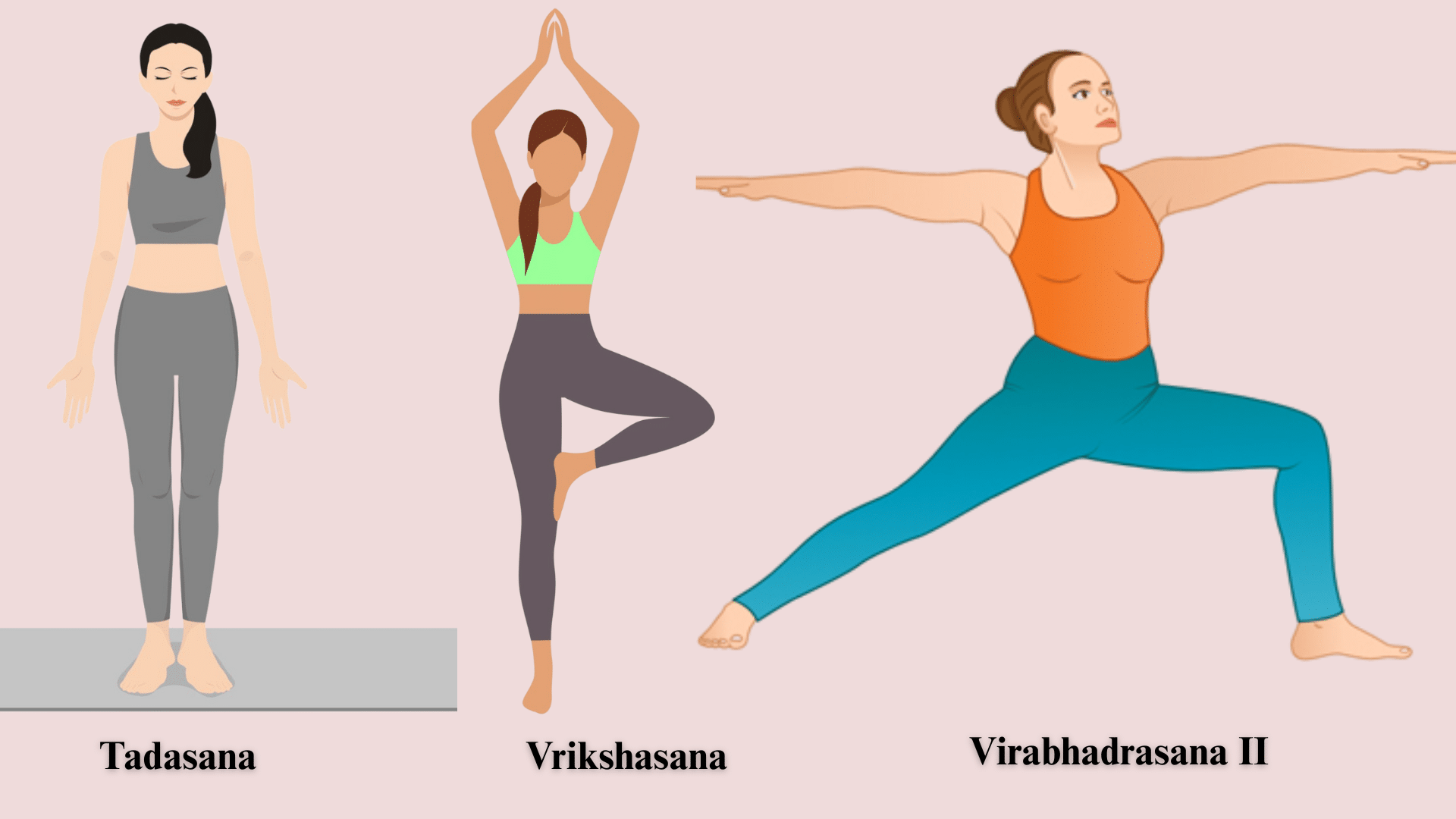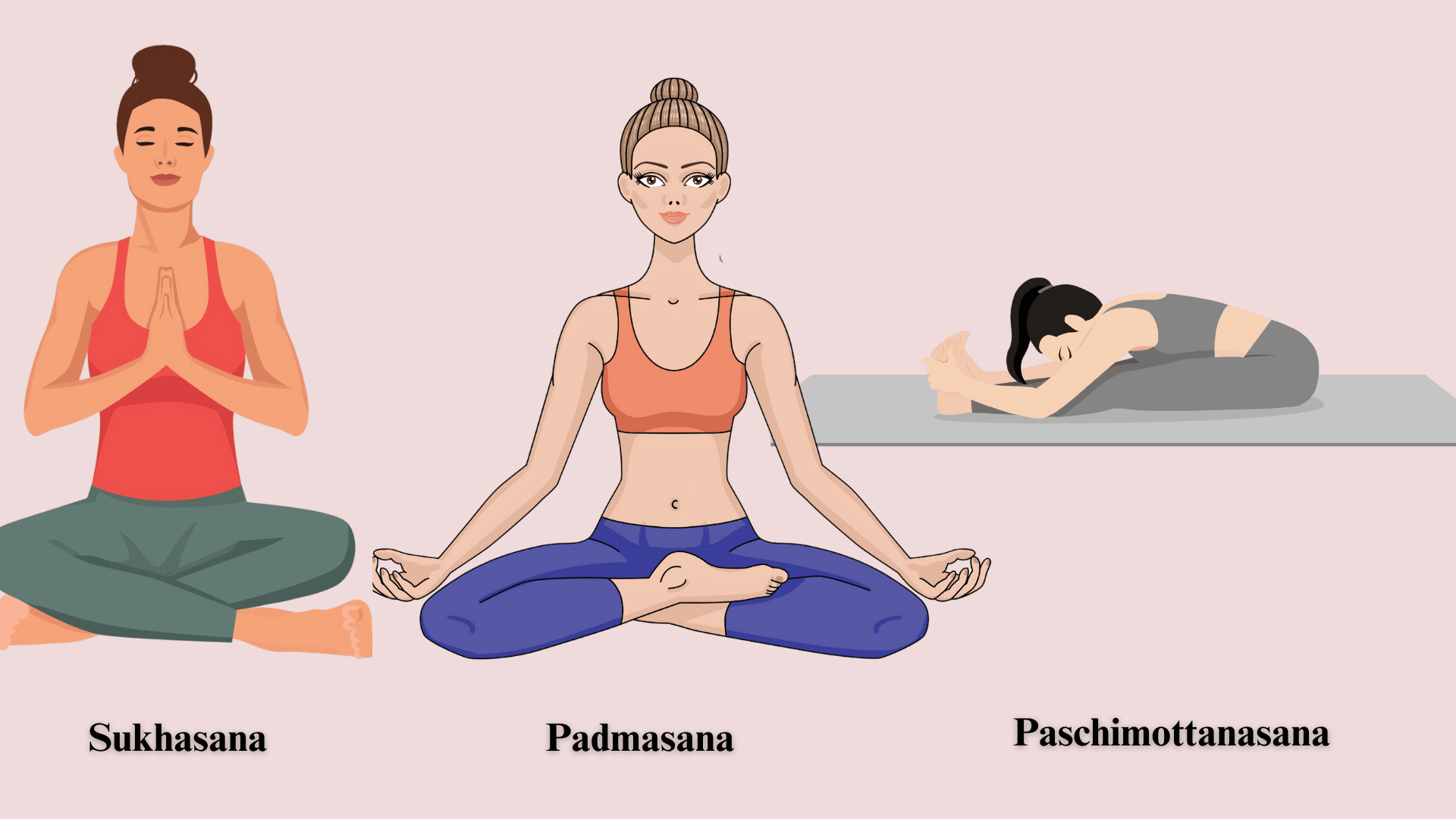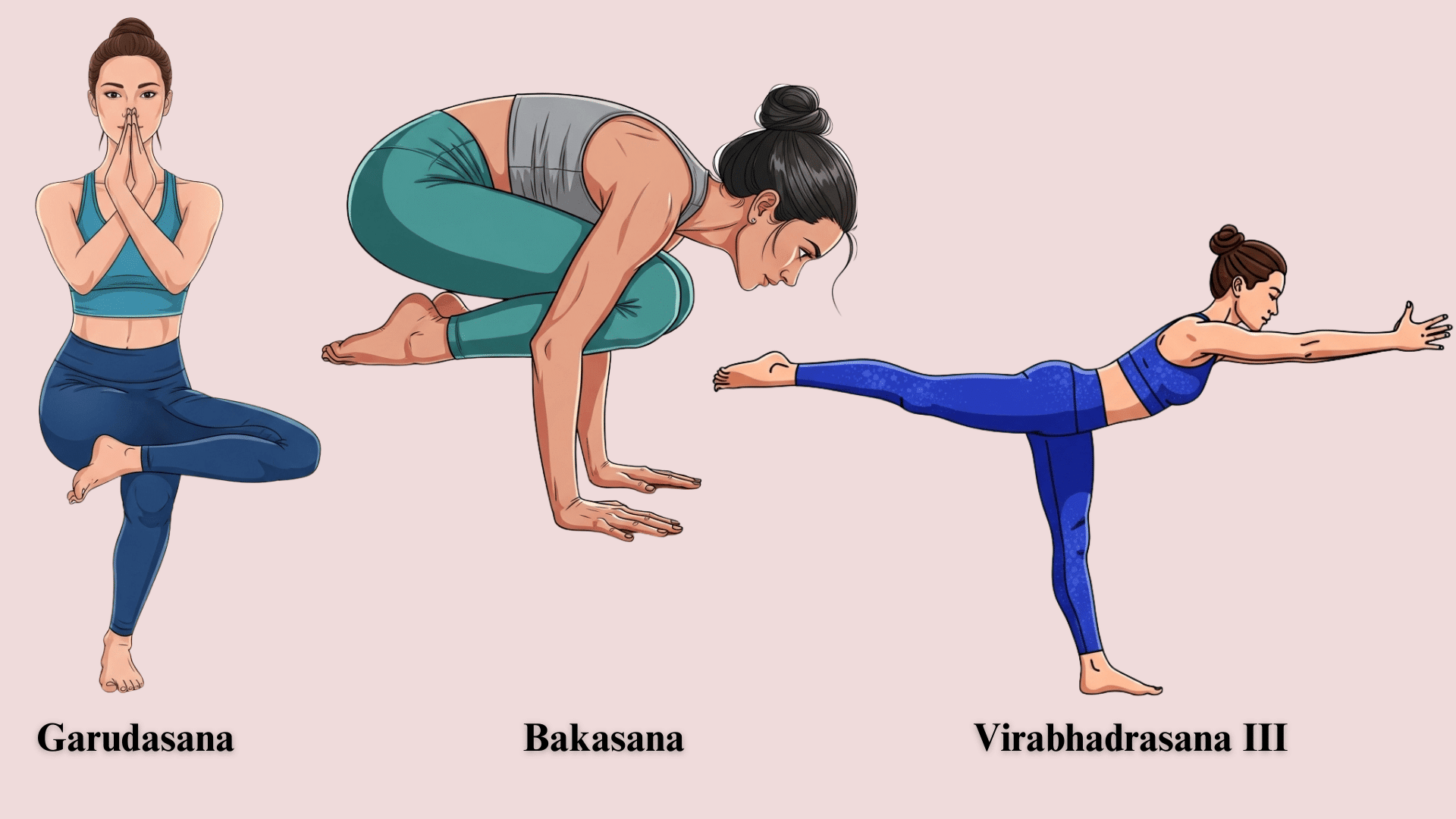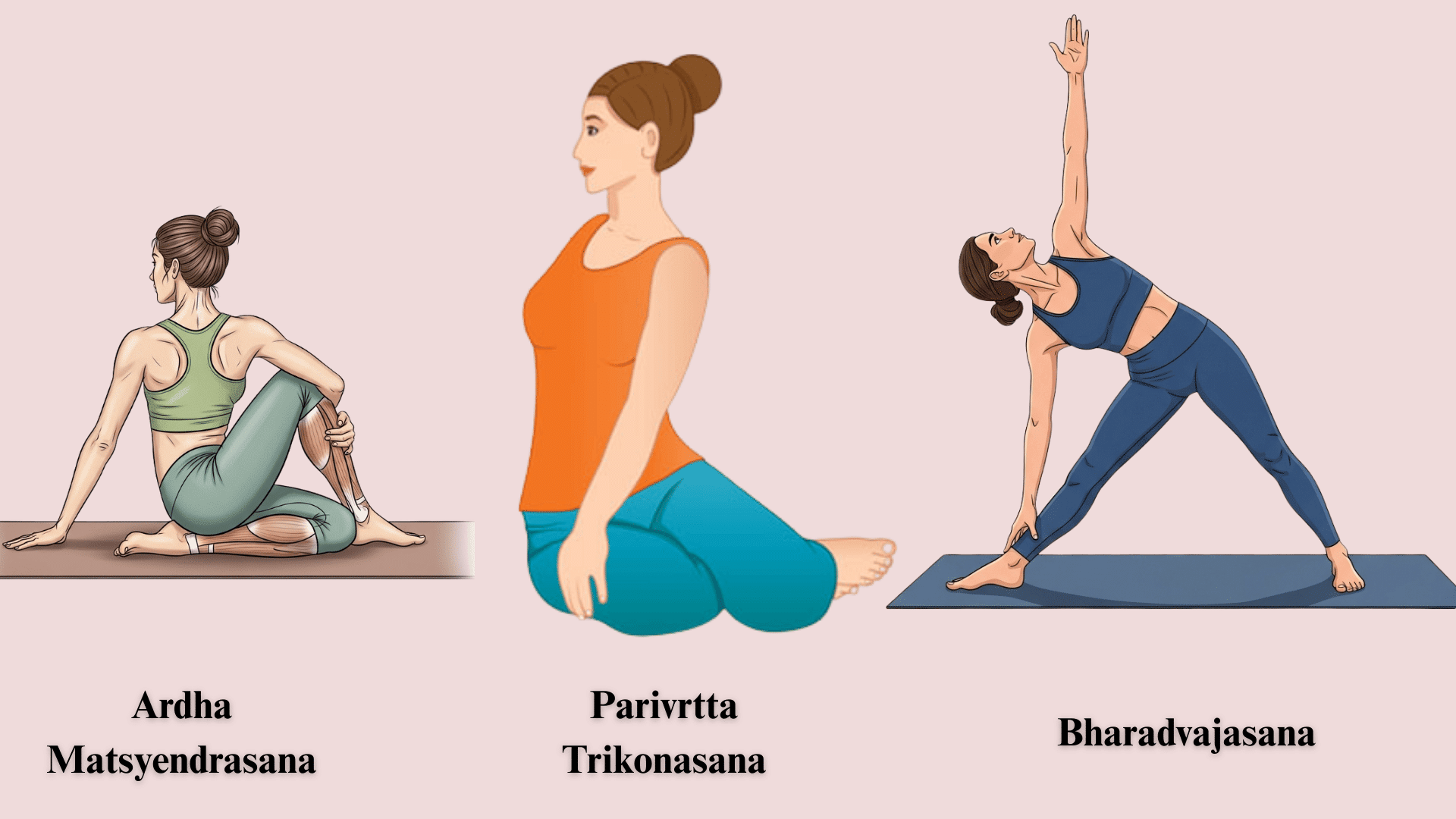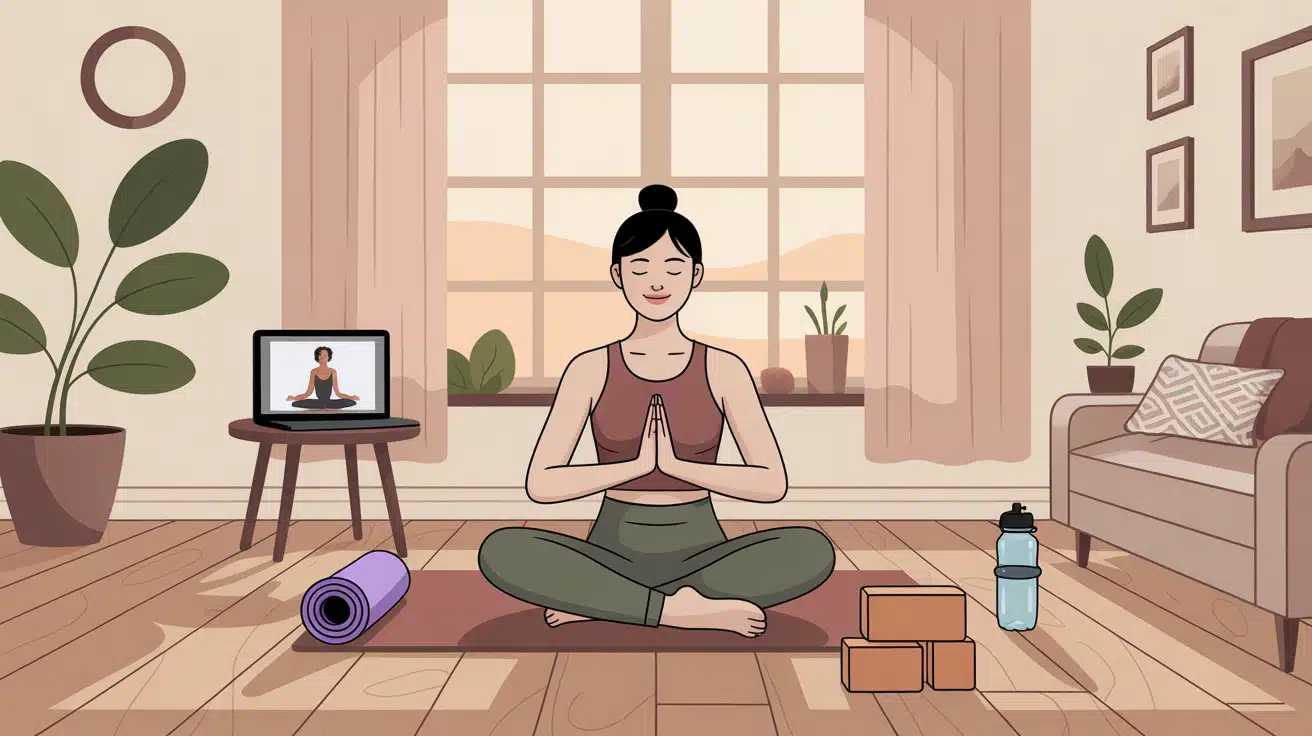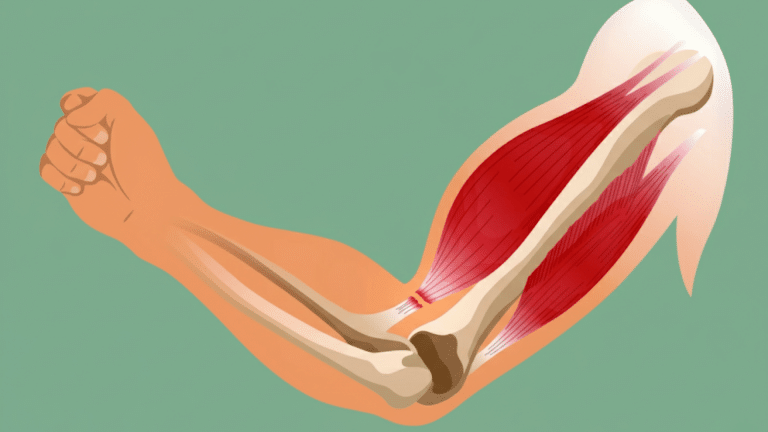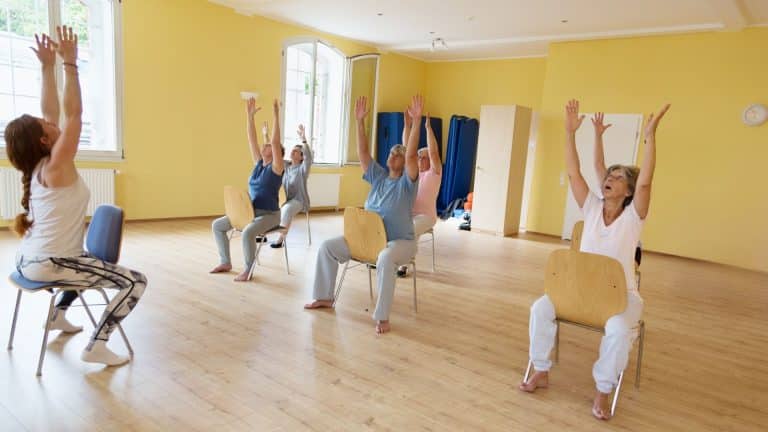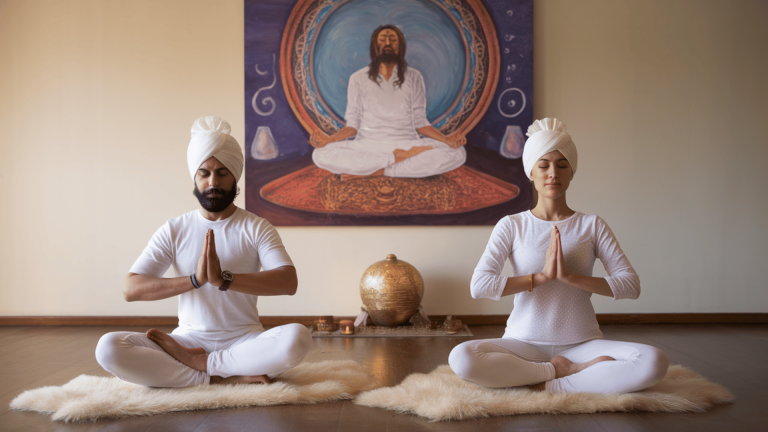Most people feel stressed, stiff, and disconnected from their bodies in today’s busy world.
You’ve probably heard about yoga’s benefits but wonder what those physical poses actually do and how to start practicing them safely.
Asana Yoga, the practice of yoga postures, offers a simple yet powerful solution.
These ancient poses combine movement, breath, and mindfulness to reduce stress, build strength, and improve flexibility. You don’t need years of experience or perfect flexibility to begin.
This comprehensive guide covers everything about Asana yoga, including what it is, the number of poses, the main types with examples, proven health benefits, and beginner-friendly poses you can try at home today.
Let’s start your yoga practice with confidence and clarity.
What Is Asana Yoga?
Asana Yoga is the foundation of most modern yoga practices you see in studios and online classes today.
This ancient system has evolved from simple meditation seats into a comprehensive approach to physical and mental wellness.
Whether you practice gentle stretches at your desk or challenging poses in a heated room, you’re engaging with the timeless art of asana yoga.
- Asana means “posture” or “seat” in Sanskrit
- Originally, asanas were steady sitting positions designed for meditation
- In modern yoga, asanas are physical yoga poses practiced for health and mindfulness
Each asana combines body movement, breath control, and mental focus, making yoga both physical exercise and mindful practice.
How Many Asana Yoga Are There?
The number of yoga asanas often sparks curiosity among both beginners and experienced practitioners.
- Classical texts, such as Patanjali’s Yoga Sutras, mention only a few seated postures for meditation.
- Hatha Yoga Pradipika: Recognized 84 classical asanas, believed to represent symbolic completeness.
- Modern yoga encompasses hundreds to thousands of poses and variations, tailored to meet the diverse needs of its practitioners.
- Practical takeaway: Most practitioners focus on 20–30 core asanas that cover strength, flexibility, and relaxation.
Types of Yoga Asanas
Yoga asanas are organized into six main categories, each serving different purposes for your body and mind. Here’s a breakdown of each type with three popular examples.
1. Standing Asanas
- Mountain Pose (Tadasana) – Improves posture and balance. Stand tall with feet together and arms at your sides. This foundational pose teaches proper alignment and builds awareness of your body’s center.
- Tree Pose (Vrikshasana) – Enhances concentration. Balance on one foot while placing the other against your inner thigh. This pose challenges your focus and strengthens leg muscles while calming the mind.
- Warrior II (Virabhadrasana II) – Builds strength in legs and core. Step into a wide lunge with arms extended parallel to the floor. This powerful pose enhances endurance, opens the hips, and fosters mental determination.
2. Seated Asanas
- Easy Pose (Sukhasana) – Basic meditation posture. Sit cross-legged with hands resting on your knees. This simple pose promotes relaxation and prepares the body for breathing exercises or meditation.
- Lotus Pose (Padmasana) – Traditional meditative seat. Cross both feet over the opposite thighs while sitting upright. This advanced pose requires flexibility but offers deep stillness and spiritual connection.
- Seated Forward Bend (Paschimottanasana) – Stretches spine and hamstrings. Fold forward from your hips while keeping your legs straight. This calming pose releases tension in the back and soothes the nervous system.
3. Balancing Asanas
- Eagle Pose (Garudasana) – Improves balance and focus. Wrap one leg around the other while binding your arms. This challenging pose strengthens ankles and improves concentration through complex coordination.
- Crow Pose (Bakasana) – Strengthens arms and core. Balance on your hands with your knees resting on your upper arms. This arm balance builds confidence and develops upper body strength while teaching trust.
- Warrior III (Virabhadrasana III) – Boosts stability and stamina. Balance on one leg while extending the other behind you. This pose challenges your entire body and builds mental focus through sustained effort.
4. Twisting Asanas
- Half Spinal Twist (Ardha Matsyendrasana) – Improves spinal flexibility. Sit with one leg straight and twist toward the bent knee. This pose aids digestion and releases tension stored in the spine and shoulders.
- Revolved Triangle (Parivrtta Trikonasana) – Opens hips and stretches spine. Twist your torso while in a wide-legged forward fold. This challenging pose combines balance, strength, and flexibility while detoxifying the body.
- Seated Twist (Bharadvajasana) – Relieves back tension. Sit sideways and gently rotate your spine toward the back. This gentle twist massages internal organs and helps alleviate stiffness caused by prolonged sitting.
5. Backbends & Forward Bends
- Cobra Pose (Bhujangasana) – Strengthens back muscles. Lie face down and lift your chest using your back strength. This energizing pose opens the heart and counteracts the effects of hunching forward.
- Bridge Pose (Setu Bandhasana) – Opens chest and hips. Lie on your back and lift your hips toward the ceiling. This accessible backbend helps improve posture and can aid in relieving mild depression.
- Child’s Pose (Balasana) – Restores energy and calms the mind. Kneel and fold forward with arms extended or by your sides. This resting pose provides comfort and helps reduce stress and fatigue.
6. Inversions
- Shoulder Stand (Sarvangasana) – Improves circulation. Lie on your back and lift your legs overhead, supporting your back with your hands. This pose reverses blood flow and can boost energy while calming the mind.
- Headstand (Sirsasana) – Builds focus and balance. Balance on your forearms and head with legs reaching toward the ceiling. This advanced pose requires practice but offers mental clarity and physical strength.
- Legs-Up-the-Wall (Viparita Karani) – Relieves fatigue and stress. Lie with legs extended up a wall while relaxing completely. This gentle inversion soothes tired legs and promotes deep relaxation.
Benefits of Practicing Asana Yoga
Regular asana practice offers comprehensive benefits that touch every aspect of your health and well-being.
Physical Benefits
- Enhances flexibility and posture – Stretching and strengthening poses gradually improve your range of motion and spinal alignment.
- Strengthens muscles and joints – Weight-bearing poses build lean muscle mass while protecting joints through controlled movement.
- Supports spinal health and digestion – Twists and backbends keep your spine mobile while massaging internal organs for better digestive function.
Mental Benefits
- Reduces stress and anxiety – Mindful movement and breath awareness naturally activate your body’s relaxation response.
- Improves focus and clarity – Balancing poses and sustained holds train your mind to stay present and concentrated.
- Promotes mindfulness and calmness – The combination of movement, breath, and awareness creates a meditative state that reduces mental chatter.
Complete Benefits
- Boosts circulation and energy – Inversions and flowing sequences improve blood flow while increasing overall vitality.
- Improves sleep quality – Evening practice relaxes the nervous system and prepares your body for deeper, more restful sleep.
- Supports overall well-being – The mind-body connection fostered through yoga practice creates lasting, positive changes in how you feel on a daily basis.
Essential Safety Tips for Asana Yoga
Every posture has its benefits, but alignment and awareness are key. Follow these guidelines to enjoy the full rewards of yoga without unnecessary risks.
| Safety Tip | Why It Matters |
|---|---|
| Warm up before practicing | Prepares muscles and joints, reduces the risk of injury |
| Focus on proper alignment | Prevents strain and ensures safe, effective practice |
| Avoid difficult poses if you have medical conditions | Protects health; always consult a doctor when in doubt |
| Practice under a certified teacher | Ensures guidance, correction, and safe progression |
How to Start Your Asana Yoga Practice?
Starting your asana yoga practice doesn’t require perfect flexibility or expensive equipment.
Begin by selecting a yoga style that matches your goals and fitness level. Hatha offers slow-paced poses perfect for beginners, Vinyasa provides flowing sequences, while Iyengar focuses on precise alignment.
Take your first steps through beginner classes online or at local studios, and don’t hesitate to use props like blocks and straps for support and safety.
- Choose a yoga style: Hatha (slow-paced), Vinyasa (flow), Iyengar (alignment)
- Start with beginner classes online or in studios
- Use props like blocks and straps for support
- Be consistent: even 10 minutes a day can change your practice
Beginner-Friendly Asanas to Try
If you’re just starting, here are simple poses you can practice safely at home:
- Mountain Pose (Tadasana) – improves posture. Stand tall with feet hip-width apart to build awareness of proper alignment and balance.
- Cat-Cow (Marjaryasana-Bitilasana) – relieves back tension. Move between arching and rounding your spine while on hands and knees to increase spinal mobility.
- Child’s Pose (Balasana) – calming and restorative. Kneel and fold forward with arms extended to release stress and gently stretch your back.
- Bridge Pose (Setu Bandhasana) – strengthens back and glutes. Lie on your back and lift your hips to build core strength while opening your chest.
- Downward Dog (Adho Mukha Svanasana) – stretches the whole body. Form an inverted V-shape to lengthen your spine and strengthen your arms and legs.
Tip: Begin with 10–15 minutes a day and gradually increase.
Asana Yoga in Modern Life
In today’s fast-paced world, asana yoga adapts beautifully to fit your busy lifestyle and specific needs.
Modern practitioners utilize yoga as a practical tool for managing the demands of contemporary life, making it more accessible than ever.
- For office workers: Desk stretches and seated poses help reduce stiffness caused by prolonged sitting and computer use.
- For stress relief: Evening yoga sessions calm the mind and prepare your body for deeper, more restful sleep.
- For fitness: Dynamic asana sequences like Vinyasa provide excellent cardio and strength training benefits in one practice.
Summing It Up
Asana Yoga offers more than physical exercise; it’s a comprehensive path to wellness that seamlessly integrates into modern life.
From the 84 classical poses to thousands of modern variations, you have endless options to explore.
The main types of asanas offer comprehensive benefits, including improved flexibility, stronger muscles, reduced stress, enhanced focus, and better sleep quality.
Remember, you don’t need to master every pose or practice for hours daily. Even five beginner-friendly asanas practiced consistently can change how you feel physically and mentally.
Ready to begin your asana yoga practice? Try the five beginner poses we shared today and experience the calming, strengthening benefits for yourself. Your body and mind will thank you.



